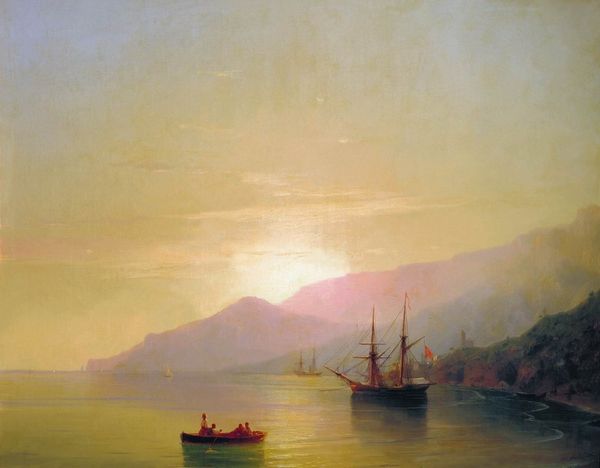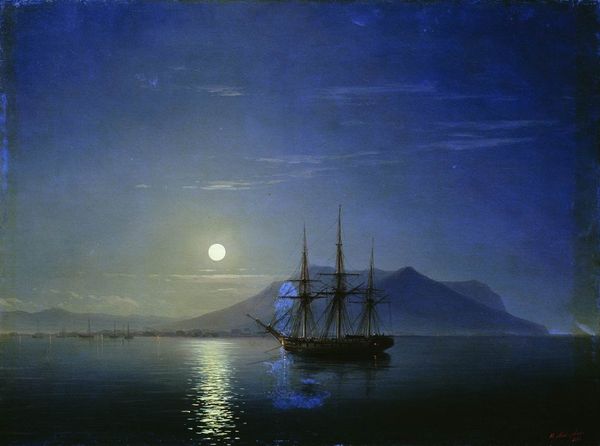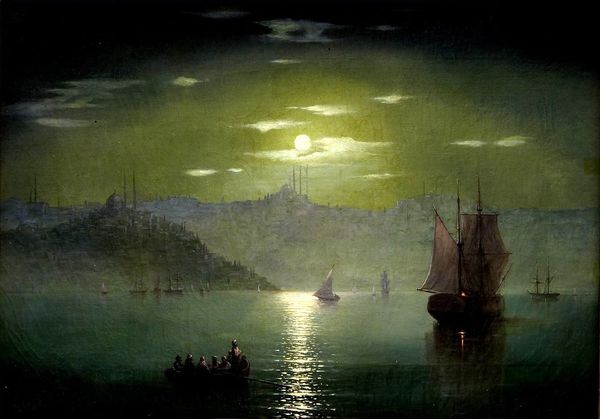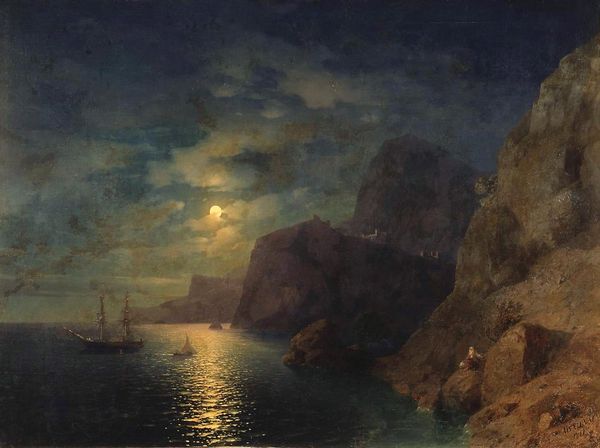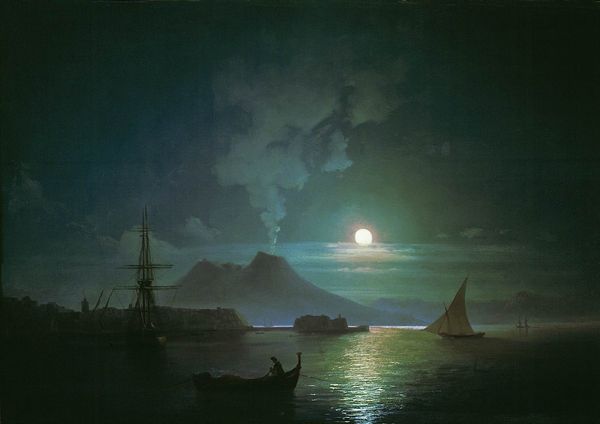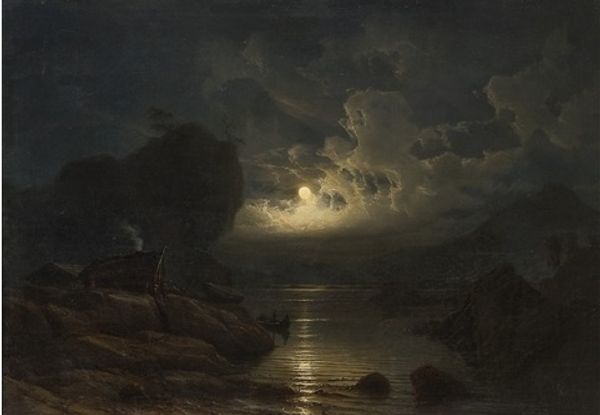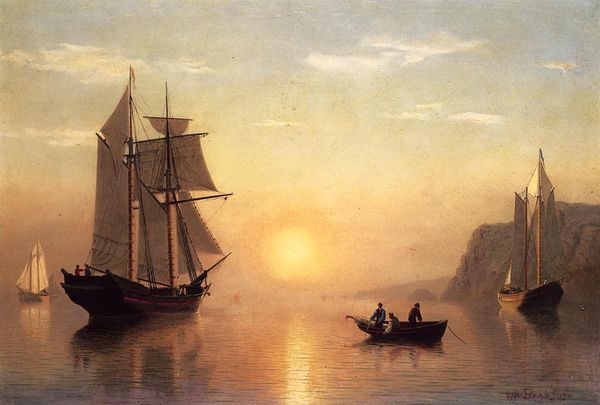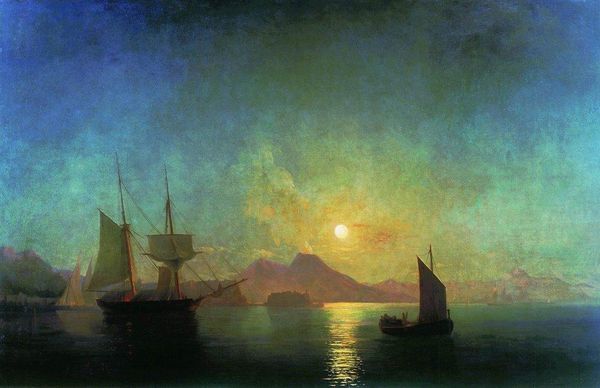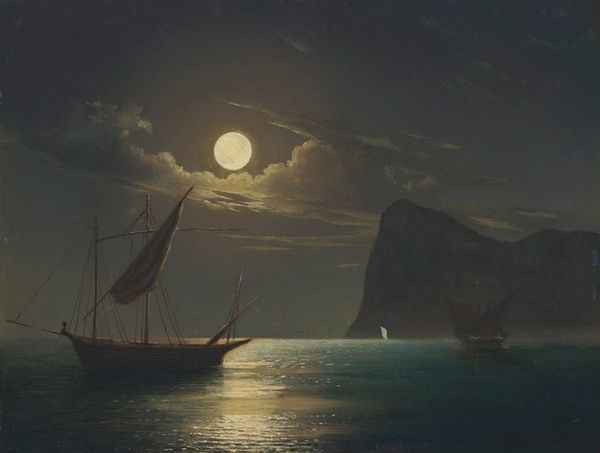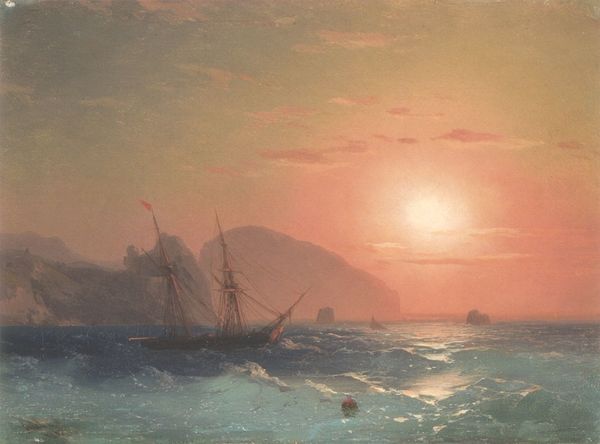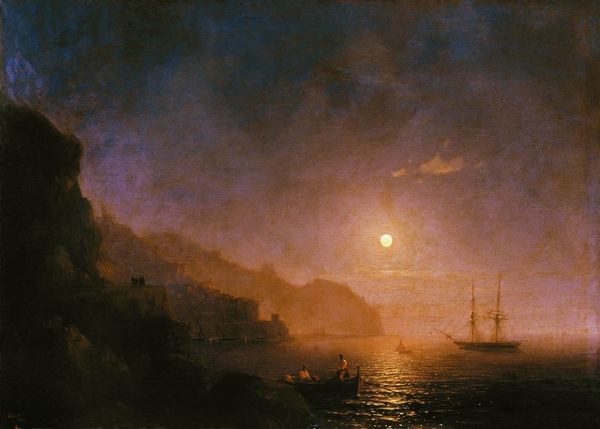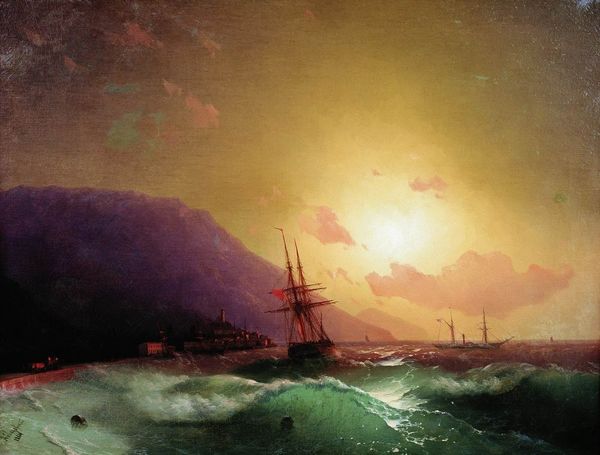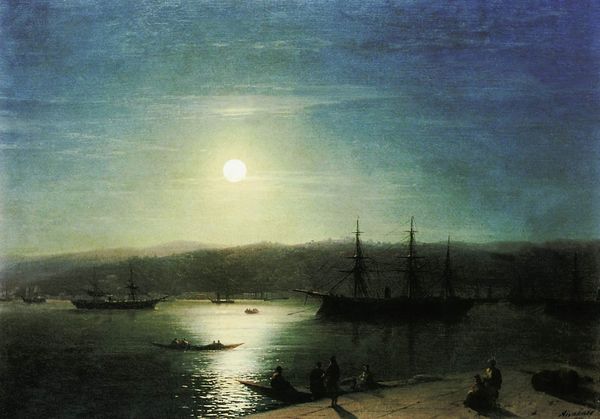
Copyright: Public domain
Editor: This is Aivazovsky’s "Lunar Night on the Black Sea" from 1859, and what strikes me most is the luminous effect he creates with the oil paint, the way the moonlight seems to shimmer on the water. What's your take on this piece? Curator: Aivazovsky’s seascapes are compelling studies in material transformation. Look at how he uses oil paint not to represent, but almost to *become* the sea and sky. Consider the labor involved: grinding pigments, layering glazes... Do you see how the moonlight is not just depicted, but seemingly *produced* by the materials themselves? Editor: I hadn't thought of it that way, but now that you mention it, I do see how the luminosity almost feels built up through layers of paint. Was Aivazovsky conscious of the industrial implications of using commercially produced oil paints? Curator: Absolutely. He lived in a time of increasing industrialization and the commodification of art supplies. The ease of access to ready-made paints undoubtedly influenced his output. How does this change your understanding of the "romanticism" often ascribed to him? Editor: It definitely complicates it! It's easy to get swept away by the beauty of the scene, but considering the means of production, the labor involved... It pulls the painting back down to earth. It becomes less about pure inspiration and more about skillful manipulation of materials in a specific historical context. Curator: Precisely! It's not just about a romantic vision, but also about Aivazovsky’s relationship to the expanding market for art and materials in 19th century. Considering these factors, how do we understand his artistic choices anew? Editor: I guess by examining what he includes—ships, the sea—and the very tangible way he represents them. Thank you! I’ll certainly see paintings differently now, considering their materiality and production.
Comments
No comments
Be the first to comment and join the conversation on the ultimate creative platform.
